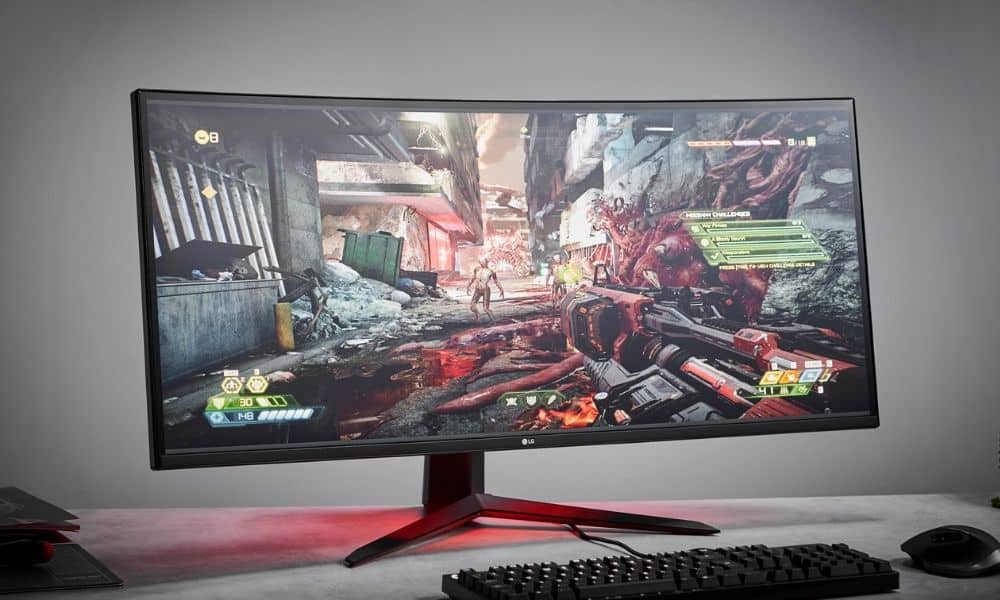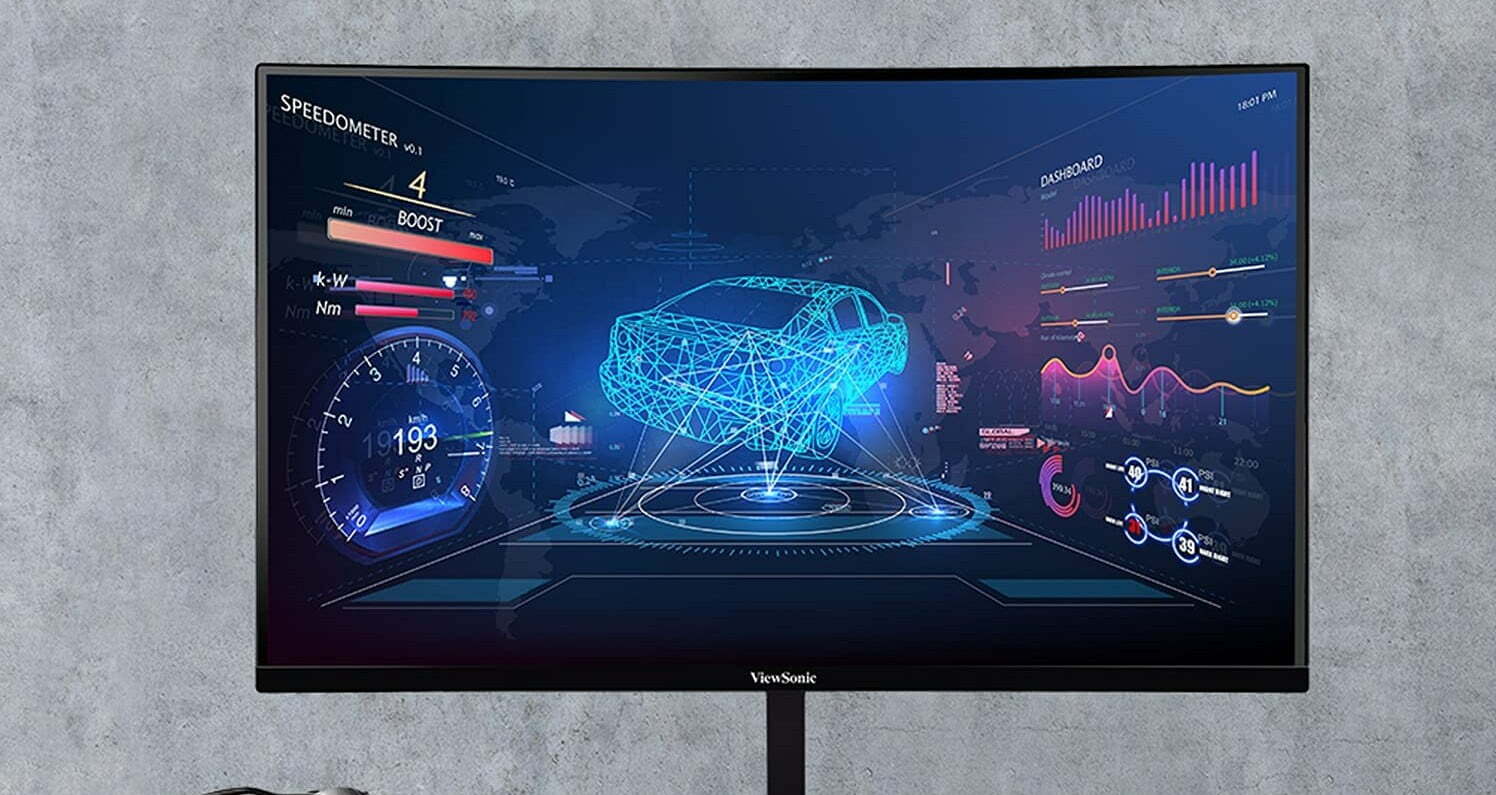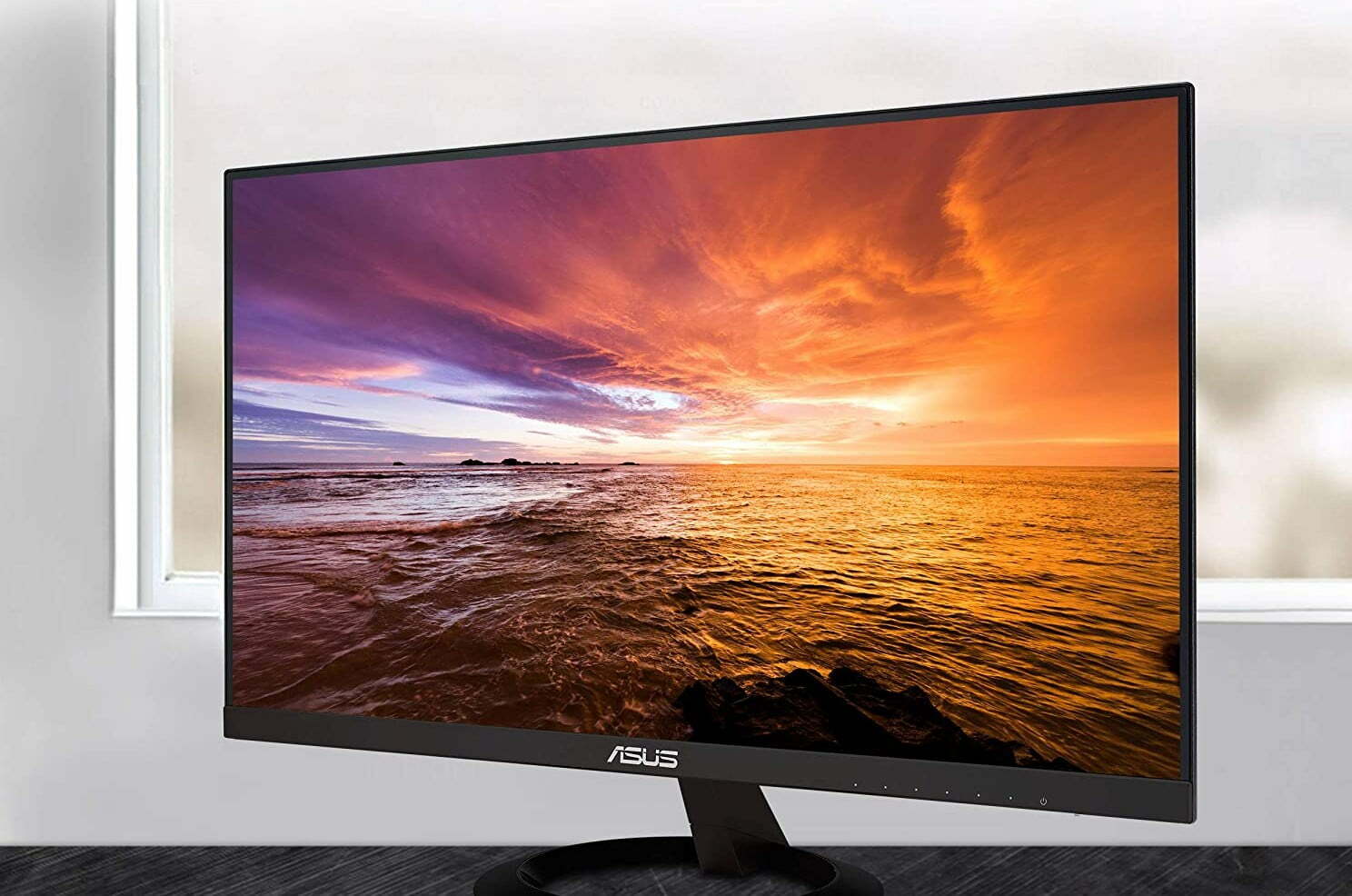Standing for high dynamic range, HDR is a strong buzzword with new computer monitors, laptop devices too and the finest HDR gaming monitors, referring to a wider contrast ratio and color reproduction. HDR monitors are rich with deeper blacks and purer whites with an enhanced color reproduction range to the tune of 1.07 billion colors to see a wider range of color that allows one to see more color detail. It is an absolute must when working on professional video and photo editing projects. Keep reading this article to learn more about what HDR monitors are, all of the different HDR formats, and the difference between HDR10 vs Dolby Vision.
What is an HDR Monitor?
Standing for ‘high dynamic range, HDR refers to the contrast between the lightest and darkest elements of your computer monitor screen. In a standard LCD monitor, the brightest part of an image is roughly 1000x brighter than its darkest part at peak brightness. An HDR range monitor can expand upon this range significantly, allowing for purer whites in bright scenes and darker blacks in dark scenes. HDRs are also capable of increasing color range, adhering to the highest level RGB color spaces for wider color reproduction.
Lastly, HDR can display more colors than a non-HDR monitor. Non-HDR monitors (8 bit) can project 16.7 million colors, whereas an HDR display is capable of replicating 1.07 billion colors for a much more lifelike picture. Note, not all people need 10-bit, especially for basic tasks where performance is not as important.
What Are The Different HDR Formats?
Just like the monitor response times, there are several different HDR standards. The most common ones are HDR10, an open-source format, and Dolby Vision, a superior version using dynamic metadata. Lesser-known HDR formats include HLG (Hybrid Log-Gamma), another open standard that is popular with cable and satellite TV services. It is very easy for broadcasters to use since it can be used on non-HDR TVs with backward compatibility.
Moreover, HDR can be used in multiple monitors, including portable displays which you can read about in our Newsoul portable monitor upgraded 15.6 IPS HDR USB-C gaming monitor review.
Related Post:
What’s the Difference Between HDR10 vs Dolby Vision?
HDR10 is an open-source form used by manufacturers for content. Typically, it applies static metadata to the display, telling it what the lightest and darkest points are. From here, your screen automatically adjusts a brightness level that is optimized towards that range.
Dolby Vision offers overall better picture quality, using dynamic metadata which adjusts the brightest and dimmest points on a scene-by-scene basis. This creates more dynamic depth when it comes to clearer and darker pictures. Unlike HDR10, Dolby Vision-supported TV manufacturers have to pay royalty fees for the privilege of using the technology (roughly $3 per TV). For obvious reasons, Dolby Vision TVs are priced higher than HDR TVs.
Do You Need HDR?
HDR is a great choice for people who want to maximize their monitor viewing experience. It represents the minimum digital photo and video editing progression who want access to the best color reproduction possible with accurate colors that appear as true to life vibrant colors. The next step up is Dolby Vision. For everyday spreadsheet and email taskers, an HDR screen is not as important.
Tip: HDR is a great choice for people who want to maximize their monitor viewing experience
Warning: For everyday spreadsheet and email taskers, an HDR screen is not as important
Note, there are also other features worth considering, such as a screen refresh rate, size, and resolution. Gamers should be just as focused on refresh rates for a smooth-flowing picture than actual HDR and image quality. It all depends on the person and what their individual needs are.
One last reason to consider HDR is varying deep black levels. If you love watching movies in darker rooms, HDR televisions will help achieve more striking black contrasts, helping the overall picture. HDR TVs are also brighter, with higher nit (brightness scale ) ratings for a more accurate representation of colors and hues. Expect at least 1000 nits with HDR10 displays and even higher for Dolby Vision displays.
Tip: If you love watching movies in darker rooms, HDR televisions will help achieve more striking black contrasts, helping the overall picture
STAT:
According to Statista, 33 million LCD (Liquid Crystal Displays) HDR units were shipped worldwide.
https://www.statista.com/statistics/783378/global-hdr-tv-shipments-by-technology/
Sources:
https://www.tomshardware.com/news/what-is-hdr-monitor,36585.html
https://www.tomshardware.com/features/best-hdr-monitor-how-to-choose
https://www.displayninja.com/what-is-hdr-for-monitors-and-is-it-worth-it/
https://www.benq.com/en-au/knowledge-center/knowledge/what-is-hdr.html
https://www.gamingscan.com/hdr-monitor-worth-it/
https://www.digitaltrends.com/computing/best-hdr-monitors/




































![Best 27 Inch Computer Monitor in [year] 27 Best 27 Inch Computer Monitor in 2025](https://www.gadgetreview.dev/wp-content/uploads/how-to-buy-the-best-computer-monitor.jpg)
![Best BenQ Monitors in [year] 28 Best BenQ Monitors in 2025](https://www.gadgetreview.dev/wp-content/uploads/best-benq-monitor-image.jpg)
![Best ASUS Monitors in [year] 29 Best ASUS Monitors in 2025](https://www.gadgetreview.dev/wp-content/uploads/best-asus-monitor-image.jpg)
![Best Dell Monitors in [year] 30 Best Dell Monitors in 2025](https://www.gadgetreview.dev/wp-content/uploads/best-dell-monitor-image.jpg)
![Best HP Monitors in [year] 31 Best HP Monitors in 2025](https://www.gadgetreview.dev/wp-content/uploads/best-hp-monitor-image.jpg)
![Best Lenovo Monitors in [year] 32 Best Lenovo Monitors in 2025](https://www.gadgetreview.dev/wp-content/uploads/best-lenovo-monitor-image.jpg)
![Best ViewSonic Monitors in [year] 33 Best ViewSonic Monitors in 2025](https://www.gadgetreview.dev/wp-content/uploads/best-viewsonic-monitor-image.jpg)
![Best Gigabyte Monitors in [year] 34 Best Gigabyte Monitors in 2025](https://www.gadgetreview.dev/wp-content/uploads/best-gigabyte-monitor-image.jpg)
![Best Monitors for PS4 Pro Gaming in [year] 35 Best Monitors for PS4 Pro Gaming in 2025](https://www.gadgetreview.dev/wp-content/uploads/best-monitors-for-ps4-pro-image.jpg)
![Best Monitor for Xbox Series X in [year] 36 Best Monitor for Xbox Series X in 2025](https://www.gadgetreview.dev/wp-content/uploads/best-monitor-for-xbox-series-x-image.jpg)
![Best Acer Monitors in [year] 37 Best Acer Monitors in 2025](https://www.gadgetreview.dev/wp-content/uploads/best-acer-monitor-image.jpg)
![Best MSI Monitors in [year] 38 Best MSI Monitors in 2025](https://www.gadgetreview.dev/wp-content/uploads/best-msi-monitor-image.jpg)
![Best SAMSUNG Monitors in [year] 39 Best SAMSUNG Monitors in 2025](https://www.gadgetreview.dev/wp-content/uploads/best-samsung-monitor-image.jpg)
![Best LG Monitors in [year] 40 Best LG Monitors in 2025](https://www.gadgetreview.dev/wp-content/uploads/best-lg-monitor-image.jpg)
![Best AOC Monitors in [year] 41 Best AOC Monitors in 2025](https://www.gadgetreview.dev/wp-content/uploads/best-aoc-monitor-image.jpg)
![Best Philips Monitors in [year] 42 Best Philips Monitors in 2025](https://www.gadgetreview.dev/wp-content/uploads/best-philips-monitors-image.jpg)
![Best Monitors For PUBG in [year] 43 Best Monitors For PUBG in 2025](https://www.gadgetreview.dev/wp-content/uploads/best-monitor-for-pubg-image.jpg)
![Best Stream Decks in [year] 44 Best Stream Decks in 2025](https://www.gadgetreview.dev/wp-content/uploads/best-stream-deck-image.jpg)
![Best Monitors for Streaming in [year] 45 Best Monitors for Streaming in 2025](https://www.gadgetreview.dev/wp-content/uploads/best-monitor-for-streaming-image.jpg)
![Best Monitors For Flight Simulator in [year] 46 Best Monitors For Flight Simulator in 2025](https://www.gadgetreview.dev/wp-content/uploads/best-monitor-for-flight-simulator-image.jpg)




















